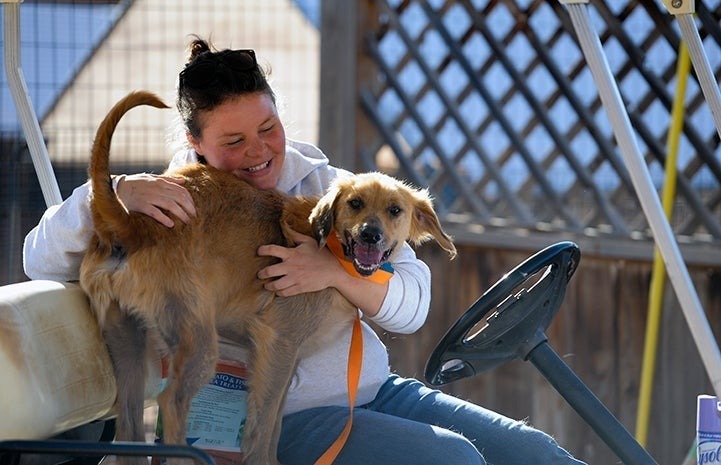Animal shelters and rescue groups are at the heart of communities, working hard every day to give homeless, abandoned, and vulnerable pets a second chance at life. If you’ve ever wondered how you can make a difference, the good news is that there are many ways to help animals in shelters and rescues—even if you’re not ready to adopt.
Whether you’re looking to volunteer your time, donate supplies, foster a pet, or simply spread the word, your contribution—big or small—can have a lasting impact. Here are 10 thoughtful and effective ways to help improve the lives of animals in need and support the people who care for them.
1. Adopt a Pet from a Shelter or Rescue
One of the most impactful ways to help is by adopting an animal from a shelter or rescue. Adoption not only gives a pet a forever home, but it also frees up space for shelters to help more animals.
Before adopting, take time to:
- Research local organizations
- Ask about their adoption process
- Meet different pets to find the right match
- Ensure your home and lifestyle are ready for a new companion
If a particular organization’s process doesn’t feel right for you, don’t give up—there are many wonderful groups looking to place animals with caring families.

2. Make a Donation
Shelters and rescues rely heavily on donations to cover operational costs. Your financial contribution can support:
- Veterinary care
- Food and shelter
- Staff training
- Community outreach programs
- Enrichment tools for animals
Even small, recurring donations can add up and provide consistent support. Check if your employer offers donation matching or consider setting up a birthday fundraiser to benefit your favorite rescue.
3. Volunteer Your Time and Skills
You don’t need to adopt a pet to make a difference. Volunteering is a great way to help animals in shelters and rescues. Whether you can walk dogs, clean kennels, help with marketing, or assist at events, shelters often welcome a wide range of skills.
Some specialized ways to volunteer include:
- Photography and videography to help promote adoptable pets
- Carpentry or electrical skills for facility improvements
- Grant writing or fundraising assistance
- Trap-neuter-return (TNR) work with community cats
Reach out to your local shelter to see where help is most needed.

4. Show Appreciation
Sometimes, a simple “thank you” can go a long way. Shelter staff and rescue volunteers often work long hours and face emotionally demanding situations.
Ways to show gratitude include:
- Writing thank-you notes or social media shout-outs
- Dropping off snacks or coffee for staff
- Publicly recognizing their efforts at community meetings
- Sharing positive adoption stories or experiences
Kindness boosts morale and reminds these teams how appreciated their work truly is.

5. Follow and Share on Social Media
One easy, no-cost way to support rescues is by following their social media pages and engaging with their content. Share posts about adoptable animals, upcoming events, or wish list items with your network.
Here’s how to help amplify their mission:
- Like and follow local groups on platforms like Facebook, Instagram, and TikTok
- Share posts with friends and family
- Leave encouraging comments
- Post your own adoption stories using hashtags
Spreading the word online can increase visibility and help animals get adopted faster.
6. Use Your Creativity for Good
If you’re crafty or enjoy DIY projects, you can create items that enrich the lives of shelter animals. Creative projects can include:
- Handmade toys for cats and dogs
- Fleece blankets for comfort
- “Adopt-Me” vests for adoption events
- Cage curtains to help reduce stress for cats
Many shelters appreciate these contributions, which enhance animal well-being and make them more appealing to potential adopters.

7. Fulfill a Shelter’s Wish List
Shelters and rescues often post supply wish lists on their websites or platforms like Amazon. These lists usually include essentials such as:
- Towels and blankets
- Toys and treats
- Cleaning products
- Food and feeding supplies
- Litter and carriers
If no list is available, contact the organization directly to ask about their most urgent needs. You can also help them set up a wish list if they don’t already have one.
8. Become a Foster Care Provider
Fostering animals plays a crucial role in helping pets transition from shelter life to permanent homes. Foster homes are especially valuable for:
- Newborn kittens and puppies
- Animals recovering from surgery or illness
- Pets struggling with shelter stress
- Seniors and animals with special needs
Fostering also helps expand an organization’s capacity, allowing more animals to be saved. And if you already have pets, fostering can be an enriching experience for your household too.
:max_bytes(150000):strip_icc()/GettyImages-565299235-d69ed23ab1b74b92a989e0bc609e7543.jpg)
9. Support Animal Welfare from Home
You can help animals in shelters and rescues without ever leaving your house. Start by being a responsible pet owner:
- Keep your pets up to date on vaccines
- Spay or neuter to prevent unplanned litters
- Use collars, ID tags, and microchips
- Keep cats indoors or provide safe outdoor spaces
- Follow leash laws when walking dogs
Preventing animals from becoming lost or entering shelters helps reduce the burden on the system.
10. Advocate for Improvements
Shelters may face challenges due to outdated policies, limited funding, or staffing shortages. You can help create positive change by:
- Attending city council meetings
- Writing to elected officials in support of animal welfare funding
- Participating in community advisory boards
- Helping shelters apply for grants or partnerships
If you notice issues or have concerns about how a shelter operates, take a constructive approach. Contact leadership, offer solutions, and seek ways to collaborate toward improvement.

Final Thoughts: Your Role in a More Compassionate Community
Helping animals in shelters and rescues doesn’t require a big budget or huge time commitment. Every act of kindness—from sharing a social media post to fostering an animal—makes a difference.
Together, we can build a world where no animal has to wait too long for a loving home. Explore the opportunities that resonate with your strengths and passions, and you’ll find that helping shelter pets is as rewarding for you as it is life-changing for them.















Leave a Reply